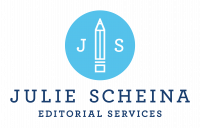Last month I participated in a panel moderated by author and illustrator Pat Cummings. Toward the end of the event, Pat asked the panelists to share the top three pieces of advice we would give to anyone looking to create children’s books and enter the publishing world. I appreciated the chance to answer this question on the panel, and I wanted to share some of that advice here as well.
My first tip is about reading—specifically, reading for enjoyment. As I mentioned in the submissions process series, reading recently published books is a necessity for all authors; it’s even more critical for children’s book authors, whose readership is constantly shifting as kids age into and out of the category. After all, the kids who were reading middle grade books ten years ago are adults now, and today’s picture book readers will be reading young adult novels in a few short years. And while being a reader doesn’t automatically make someone a strong writer, I’ve never met a strong writer who wasn’t also a reader.
That said, this advice is hardly original. If you’re a writer, you’ve likely heard about the importance of reading current books in your category time and time again, whether in newsletters like this, in writing-focused books, at conferences, in workshops, etc. You may have also been advised to read like a writer, studying published books to understand the techniques their authors used (an approach I’ll discuss in next week’s letter).
While reading like a writer and reading to understand the current marketplace are both important, they can also lead authors to become so focused on the utility of reading that they forget what drew them to books in the first place: enjoyment. As anyone who’s worked in publishing can tell you, treating every book you read like an assignment is one of the fastest ways to sap the joy out of reading all together. Writing and publishing can be challenging enough; removing all of the pleasure from reading only makes the process feel that much harder.
Likewise, working to unpack the mechanics of a story can make it easy to lose sight of the intangible, emotional side of the reading experience. Ultimately, readers value how a story makes them feel—whether they care about the characters and are invested in the plot—far more than the construction of any individual sentence. For authors, this approach can also lead to the comparison trap, burnout, and writing that feels staid, formulaic, and joyless.
So, if you’ve been focused purely on the analytical, reverse-engineering, how-did-they-do-that side of reading, I’d encourage you to try reading more books with no aim in mind other than enjoyment. If you struggle to turn off the critical side of your brain, you might try listening to audiobooks; reading in an unfamiliar category; asking a friend for their favorite recent read; rereading one of your personal favorites; joining a book group; or reading aloud with the kids in your life.
Rediscovering the pleasure of reading a story that is so good you can’t wait to talk about it—without the pressure of making every book a teachable moment—can help to rekindle your passion for writing and refill your creative well.
Next week, I’ll be talking about my second tip, which falls on the opposite side of the reading spectrum but is another important approach in the writer’s toolbox: reading like a writer.
Your Editor Friend,
Julie
